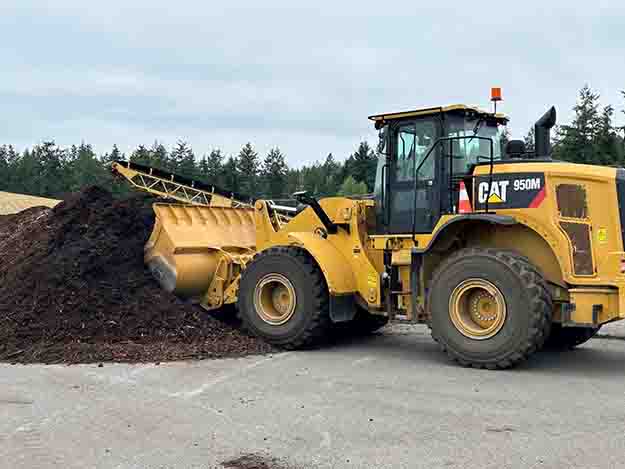JOINT BASE LEWIS-McCHORD - Composting is second nature to Joint Base Lewis-McChord; it's been happening for over a decade at the Earthworks facility. Natural wood waste, storm debris, leaves and food waste are combined to create a high-quality compost. Compost on JBLM is used for area beautification, stormwater filtration and restoration of construction areas.
"Composting is a low effort, cost effective and environmentally sound way to dispose of yard waste and food waste that is generated on JBLM," said Jaimie Wharton, Recourse Conservation and Recovery Act program manager at JBLM's Directorate of Public Works Environmental Division. "It (composting) diverts waste from landfills, reduces disposal costs, and produces compost and mulch products for use on JBLM."
Organic waste is composted at JBLM using actively aerated static pile technology to optimize the natural processes of decomposition. The organic waste materials are mixed in accordance with a "brown" carbon to "green" nitrogen ration recipe and then constructed into linear piles inside eco blocks. The process is done inside JBLM's compost facility which has been recently remodeled with a new in-floor aeration system to support the aerated static pile process.
All incoming organic waste is placed in the mixing area or staging area specific to the type of feedstock being received. Compost feedstocks are premixed in the mixing area until there is enough material to create a new pile. The premix is then covered with a 6-to-12-inch layer of wood mulch or finished compost to reduce vector attraction and mitigate odors. Materials are mixed with a front-end loader in the mixing area according to a pre-determined "recipe" of carbon to nitrogen.
During the initial active composting phase, time and temperature requirements according to Process to Further Reduce Pathogens and Vector Attraction Reduction are accomplished in order to protect human health and the environment from pathogens and vectors which may transmit disease.
The second composting phase, the curing phase, takes between 30 and 60 days. At the end of this phase, the compost material is suitable for use as a soil amendment for nursery and landscaping purposes. After curing, the product is screened and it can mature for up to 12 months into a more nitrogen stable, plant-friendly product. JBLM's Directorate of Public Works Environmental Division staff samples the compost on a quarterly basis to make sure it meets all requirements before the final product is distributed for use on JBLM.
JBLM officials anticipate the acceptance and processing of approximately 2,500 to 4,500 tons of organic waste feedstock at the composting facility each year to result in approximately 1,000 cubic yards of compost for use. The amount of any one type of feedstock is determined by the season, deployments, and the installation population and associated life activities.





Read Comments